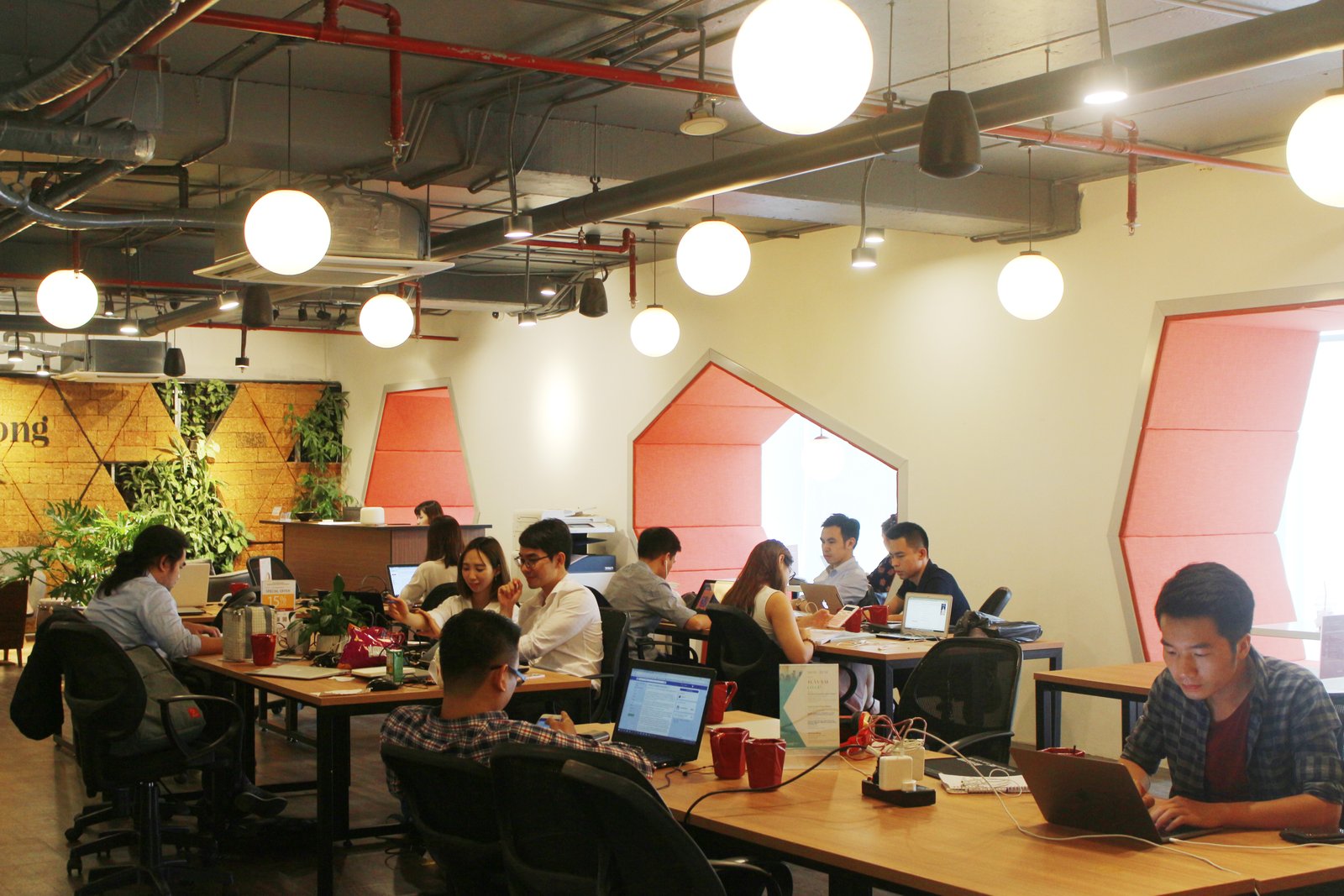The world as we know it has undergone a seismic shift, and the way we work is no exception. As the global pandemic forced millions of employees to abandon their office cubicles and embrace the virtual realm, remote work swiftly became the new norm. But what does this mean for the future of real estate? With the traditional office space losing its allure, the landscape of commercial and residential properties is poised for a dramatic transformation. In this article, we delve into the fascinating interplay between remote work and the real estate industry, exploring the potential implications, challenges, and opportunities that lie ahead. Brace yourself for a journey into a future where the boundaries of work and home blur, and the very concept of a physical workplace is redefined.
Table of Contents
- The Impact of Remote Work on Urbanization Patterns
- The Rise of Co-working Spaces and Flexible Offices
- The Shift in Residential Preferences and Housing Market Trends
- Adapting Real Estate Strategies to Cater to Remote Workers
- Embracing Technology to Enhance Remote Work Experience in Real Estate
- Q&A
- Insights and Conclusions

The Impact of Remote Work on Urbanization Patterns
With the rise of remote work, urbanization patterns are experiencing a significant shift. This new way of working has the potential to reshape cities and alter the traditional dynamics of urban development. Here are some key impacts of remote work on urbanization patterns:
- Decentralization of workforce: Remote work allows individuals to choose where they live, breaking the traditional notion of being tied to a specific urban center. As a result, we are witnessing a decentralization of the workforce, with people opting for smaller towns, suburbs, or even rural areas. This trend has the potential to alleviate the strain on overcrowded cities and promote more balanced regional development.
- Revitalization of smaller communities: As remote workers flock to smaller communities, these areas experience a revitalization. The influx of new residents brings economic opportunities, increased demand for local services, and a boost to the overall quality of life. This can lead to the development of vibrant, self-sustaining communities that were previously overlooked.
- Reduction in commuting and traffic congestion: Remote work eliminates the need for daily commutes to urban centers, resulting in a significant reduction in traffic congestion and associated environmental impacts. This shift not only improves air quality but also frees up valuable time for individuals, allowing them to focus on personal well-being, family, and community engagement.
As remote work continues to gain traction, it is crucial to monitor and adapt to these changing urbanization patterns. By embracing the potential of remote work, cities and communities can harness its benefits to create more sustainable, inclusive, and resilient urban environments.

The Rise of Co-working Spaces and Flexible Offices
Co-working spaces and flexible offices have witnessed a remarkable surge in popularity in recent years, revolutionizing the way people work. These innovative workspaces offer a flexible and collaborative environment that caters to the needs of modern professionals.
One of the key advantages of co-working spaces is the flexibility they provide. Gone are the days of being tied down to a long-term lease or a traditional office setup. With co-working spaces, individuals and businesses have the freedom to choose the duration of their stay, whether it’s a few hours, days, or months. This flexibility allows professionals to adapt their workspace to their changing needs, making it ideal for freelancers, startups, and even established companies looking to expand into new markets.
Moreover, co-working spaces foster a sense of community and collaboration. These vibrant hubs bring together individuals from diverse backgrounds and industries, creating opportunities for networking, knowledge sharing, and collaboration. Whether it’s through organized events, shared amenities, or simply the open layout that encourages interaction, co-working spaces promote a sense of belonging and support among its members.
As the demand for flexible workspaces continues to rise, the co-working industry is evolving to meet the changing needs of professionals. From specialized spaces tailored to specific industries to premium amenities such as gyms, cafes, and even childcare facilities, co-working spaces are constantly innovating to provide an all-inclusive work environment.
With , the traditional office landscape is undergoing a significant transformation. These dynamic workspaces offer a refreshing alternative to the conventional 9-to-5 routine, empowering individuals to work on their own terms while fostering collaboration and community.

The Shift in Residential Preferences and Housing Market Trends
In recent years, there has been a noticeable shift in residential preferences, leading to significant changes in the housing market trends. These shifts can be attributed to various factors, including evolving lifestyles, economic conditions, and technological advancements.
One prominent trend is the increasing demand for sustainable and eco-friendly housing options. Homebuyers are now more conscious of their environmental impact and are actively seeking properties that incorporate green features such as solar panels, energy-efficient appliances, and sustainable building materials. This shift towards sustainability not only benefits the environment but also provides long-term cost savings for homeowners.
Another notable change is the rise of remote work and flexible lifestyles. With the advancements in technology, more individuals are opting for remote work arrangements, allowing them to choose where they live without being tied to a specific location. This has led to a surge in demand for homes in suburban and rural areas, away from the hustle and bustle of city life. Homebuyers are now prioritizing spacious homes with dedicated home offices and outdoor spaces that cater to their work-life balance needs.
Furthermore, the preferences of younger generations, such as millennials and Gen Z, are also shaping the housing market. These tech-savvy individuals value convenience, connectivity, and access to amenities. As a result, there is a growing demand for properties located in urban areas with easy access to public transportation, shopping centers, and recreational facilities.
Overall, the shift in residential preferences is transforming the housing market, with sustainability, remote work, and urban amenities playing key roles. As the market continues to evolve, it is crucial for real estate developers and agents to adapt to these changing trends and cater to the diverse needs of homebuyers.
Adapting Real Estate Strategies to Cater to Remote Workers
As the world continues to embrace remote work, the real estate industry is also evolving to cater to the needs of this growing demographic. Adapting real estate strategies to accommodate remote workers is becoming increasingly important, as more individuals are seeking homes that provide the ideal environment for productivity and work-life balance.
One key consideration for real estate professionals is the location of properties. Remote workers often prioritize areas with reliable internet connectivity and access to amenities such as coworking spaces and coffee shops. By identifying and promoting properties in these desirable locations, real estate agents can attract remote workers looking for a conducive work environment.
Additionally, the design and layout of properties can play a crucial role in appealing to remote workers. Features such as dedicated home offices, soundproofing, and ample natural light are highly sought after. Creating spaces that can be easily transformed into functional work areas, such as multipurpose rooms or flexible living spaces, can also be a selling point for remote workers.
Furthermore, real estate professionals can provide valuable resources and information to remote workers looking to relocate. This can include guides on local amenities, internet service providers, and even recommendations for nearby networking events or professional communities. By offering this level of support, real estate agents can position themselves as trusted advisors and attract remote workers seeking a seamless transition to their new work-from-home lifestyle.
is not only a smart business move but also a reflection of the changing landscape of work. By understanding the unique needs and preferences of this growing demographic, real estate professionals can stay ahead of the curve and provide tailored solutions that meet the demands of remote workers.
Embracing Technology to Enhance Remote Work Experience in Real Estate
Technology has revolutionized the way we work, and the real estate industry is no exception. Embracing technology has become essential to enhance the remote work experience in real estate, allowing professionals to stay connected, productive, and efficient.
One of the key technologies that has transformed the real estate industry is virtual reality (VR). With VR, real estate agents can provide immersive property tours to potential buyers without them having to physically visit the property. This not only saves time and resources but also allows buyers to get a realistic feel of the property from the comfort of their own homes.
Another technology that has greatly enhanced remote work in real estate is cloud computing. Cloud-based platforms and tools enable agents to access and share important documents, contracts, and listings from anywhere, at any time. This eliminates the need for physical paperwork and allows for seamless collaboration between team members, even if they are located in different parts of the world.
- Virtual reality (VR) for immersive property tours
- Cloud computing for easy access to documents and collaboration
- Video conferencing for virtual meetings and client interactions
- Mobile apps for on-the-go property management and communication
By embracing these technologies and more, the real estate industry can unlock new possibilities for remote work, making it easier for professionals to adapt to changing circumstances and provide exceptional service to clients.
Q&A
How will remote work impact the future of real estate?
Remote work will likely lead to a shift in housing preferences, as people no longer need to live close to their workplace. This could result in increased demand for properties in suburban or rural areas, as well as a decrease in demand for urban apartments.
Will remote work cause a decline in urban real estate prices?
While it is possible that urban real estate prices may experience a slight decline due to reduced demand, it is important to consider other factors such as population growth and the appeal of city living. Urban areas still offer various amenities and opportunities that may continue to attract residents.
What impact will remote work have on commercial real estate?
The rise of remote work may lead to a decrease in demand for traditional office spaces, as companies adopt more flexible work arrangements. However, this could also create new opportunities for repurposing commercial spaces into co-working hubs or shared offices.
How will remote work affect the housing market in suburban areas?
Suburban areas may experience an increase in demand for housing as remote workers seek larger homes with more space for home offices and outdoor areas. This could lead to a rise in property values and potentially a shortage of available homes in these areas.
What challenges might arise in the real estate industry due to remote work?
Real estate agents and brokers may need to adapt their strategies to cater to remote workers, such as offering virtual property tours and utilizing online marketing platforms. Additionally, there may be a need for more flexible lease agreements to accommodate the changing needs of remote workers.
Will remote work impact the rental market?
The rental market may experience some changes as remote work becomes more prevalent. Some renters may choose to relocate to more affordable areas, while others may opt for larger rental properties to accommodate their work-from-home needs. Landlords may need to adjust their rental offerings to cater to these shifting demands.
What opportunities might arise in the real estate market due to remote work?
The remote work trend could create opportunities for real estate developers to build innovative co-living spaces or mixed-use developments that cater to the needs of remote workers. Additionally, there may be an increased demand for properties with dedicated home office spaces or access to high-speed internet.
How will remote work impact the overall economy and real estate market?
Remote work has the potential to reshape the economy and real estate market by influencing migration patterns, changing housing preferences, and altering the demand for commercial spaces. It may also lead to the revitalization of certain areas as remote workers bring economic activity to previously overlooked regions.
Insights and Conclusions
As we gaze into the crystal ball of the future, it becomes abundantly clear that remote work is not just a passing trend, but a seismic shift that will forever alter the landscape of real estate. The traditional office, once a symbol of productivity and collaboration, is now being replaced by the comfort of our own homes, coffee shops, or even tropical islands. The allure of flexibility and freedom has captivated the hearts and minds of workers worldwide, and the real estate industry must adapt or risk being left behind.
But what does this mean for the future of real estate? The answer lies in the transformation of our cities and suburbs. As the need for large office spaces dwindles, we can expect a shift towards smaller, more flexible workspaces. Co-working spaces will become the new norm, offering a sense of community and collaboration that remote workers crave. These spaces will be designed with the modern worker in mind, providing all the amenities necessary for a productive day’s work.
The impact on residential real estate will be equally profound. With the freedom to work from anywhere, the concept of location will no longer be tied to proximity to the office. Suburban areas will experience a renaissance as workers seek out larger homes and green spaces, while urban centers may see a decline in demand for high-rise apartments. The lines between work and home will blur, as homeowners prioritize the creation of dedicated workspaces within their own abodes.
But it’s not just the physical spaces that will be affected. The very nature of real estate transactions will undergo a transformation. Virtual tours and remote viewings will become the norm, allowing buyers and renters to explore properties from the comfort of their own screens. The role of real estate agents will evolve, as they become experts in navigating the digital realm and providing personalized advice to clients.
As we bid farewell to the traditional office and embrace the era of remote work, the future of real estate is ripe with possibilities. It is a future where flexibility and freedom reign supreme, where the boundaries between work and home are blurred, and where the concept of location is redefined. The real estate industry must adapt to this new reality, embracing innovation and creativity, in order to thrive in the brave new world that awaits us. So let us raise a glass to the future, where remote work and real estate intertwine, shaping a world that is both exciting and full of potential.
As an affiliate, my content may feature links to products I personally use and recommend. By taking action, like subscribing or making a purchase, you’ll be supporting my work and fueling my taco cravings at the same time. Win-win, right?
Want to read more? Check out our Affiliate Disclosure page.